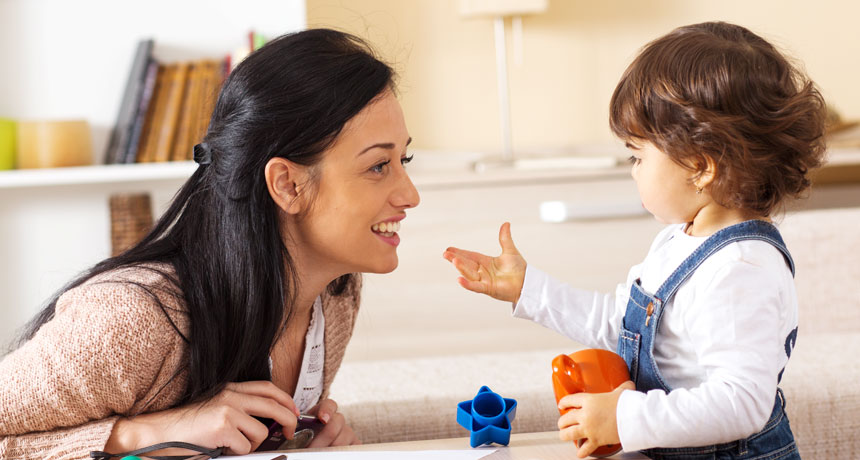
We live in a modern world with so many distractions that it’s often a challenge to complete tasks and to “be” in the present. We are thinking about what needs to be done in our households, we are checking our phones, rushing around to school drop off, to work and on errands. We can only empathize with our children who are growing up in this fast paced environment. I personally become distracted by all the stimuli and it certainly takes considerable practice and effort to focus my attention when my mind is buzzing.
How Can We Support Our Child's Attention With All of This Stimuli?
Below I have comprised a list of philosophies and techniques that have served me both as a speech-language pathologist and as a mother of two boys.
- GIVE ATTENTION TO GAIN ATTENTION
Children are developing their attention abilities in the first few years of life and only mature in this ability by 5 years of age. We can make a mindful decision to put away our digital technology for 5-10 minutes a day and practice focused attention with our child. We can also tell our interrupting thoughts/To Do Lists to wait a while until we are done. This special time with your child can be spent listening to a recap of their day, sharing a snack, playing outside or even building a block tower. We have to be willing to shut everything off to teach this skill.
- LOOK AT YOUR CHILD
I know this technique sounds like common sense but it is an important one. Show your child that you are attending and CONNECTING with them. Get down on their level and look at them. Kids certainly pick up on our non-verbal cues, so be present. As a model, you are teaching your child how to connect with others which will help them navigate socially as they with peers and teachers and friends. Attention, socialization and language go hand in hand and attention is the building block.
- PROVIDE YOUR CHILD WITH SPACE TO COMMUNICATE
Your child has many ideas to express so it’s nice to watch and listen without finishing their thoughts or pulling in any direction. By watching, you can wait until they give you the signal that they have finished their thought. Wait until they successfully indicate that their thought it complete. It feels so good to be received. Let your child set the pace and place your agenda on hold. You can be responsive to them which is pretty powerful.
- FOLLOW HIS/HER LEAD
Give your child the opportunity to choose what he/she wants to play versus planning or setting up something beforehand). Be spontaneous and join in and see what your child gravitates to. You can build onto your child’s motivation by adding language into the activity. Maybe they want to play with the magnets on the refrigerator or maybe they want to dance.

- KEEP IT SIMPLE
With all of the crafts and ideas on Pinterest, it’s sometimes nice to just keep it simple. You don’t need to create something to perfection. If you want to keep it more structured, put out a few short activities (puzzles, books, blocks, snack) and go with it. Remember, you can connect with your child while playing with a box!! All your child needs is YOU.
- PLAY QUIETLY!
It’s okay if we play quietly with our children. When we engage in the same activity as our child, it facilitates more opportunities for connection and communication. Nodding, smiling, mirroring your child’s actions and watching are very powerful tools to extend interactions and reciprocity. We can rely solely on gestures and eye contact to tune in sometimes.
- LAYER IN LANGUAGE WHILE PLAYING
Don’t forget to add language into play. If you are playing in the bath and your child is splashing then you can expand on this single word and state, “splash higher”, use descriptors such as “wet”, “hot”, “cold”, “soapy” or create verbal routines around bath time so that your child can initiate and anticipate what is coming next over time. Children acquire more language when they are doing something they enjoy.
- END BEFORE YOUR CHILD BECOMES SATIATED
It’s okay to end an activity early even if it is not completed. If you see that your child is becoming restless, you can interpret that cue and end the interaction on a positive note. This helps the child to have a positive association with this focused time you have shared.
Don’t forget to HAVE FUN during this child focused time.
We at Huntington Speech and Feeding specialize in improving a child's attention based on their individual learning style. If your child is demonstrating difficutly learning due to attention deficits, we are here to help. Please call to set up an appointment or consultation.
